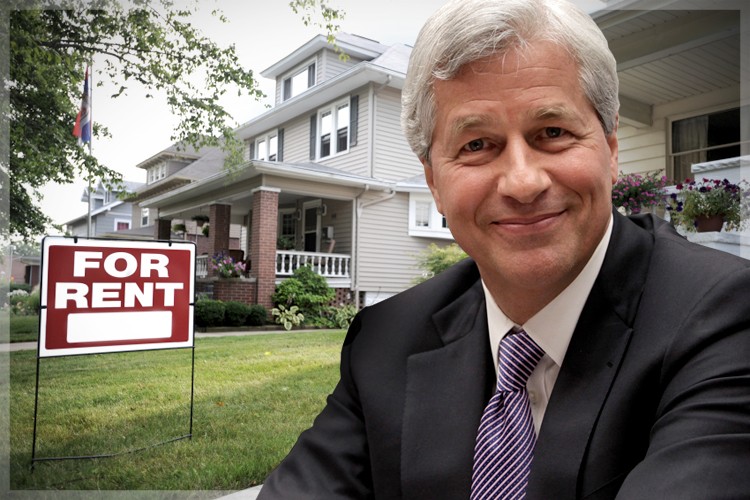The Credit Crisis Put the Blame on Wall Street
Post on: 16 Март, 2015 No Comment

Editor’s Rating:
How an insatiable appetite for risky loans put big investment banks at the center of the subprime crisis
Chain of Blame:
How Wall Street Caused the
Mortgage and Credit Crisis
By Paul Muolo and Mathew Padilla
Wiley; 338pp.; $27.95
Soaring foreclosures. Bank failures. Chaos in the stock market. Not so long ago, few dared to predict that a frothy housing sector would lead to such pain. Now that the magnitude of problems caused by years of lax lending standards is sinking in, the chroniclers are out in full force. How did we get to this pretty pass? Who is to blame? Many could take the rap: greedy home buyers; unregulated, commission-hungry brokers; builders who conspired with crooked appraisers; and even the Federal Reserve, which flooded the market with easy money.
But follow the serious money, and it leads to one culprit above all others: Wall Street. The entire chain of events would not have happened had Wall Street not been buying. Investment banks upended the traditional buy-and-hold model for lending (which dictated prudent underwriting, since mortgages stayed on the books) and instead seized on the liquidity of secondary markets, where loans were bundled into securities and sold off to investors who assumed the risk. Wall Street took a lucrative cut for the packaging services—a total of $26.6 billion from 2002 to 2007.
Moreover, as Paul Muolo and Mathew Padilla’s Chain of Blame: How Wall Street Caused the Mortgage and Credit Crisis describes, an insatiable appetite for the riskiest (and most profitable) loans led firms like Bear Stearns (JPM) and Merrill Lynch (MER) to binge further, buy wholesale operations outright, take large stakes in broker outfits, and extend multimillions in credit—all to ensure a steady flow of product for their subprime securitization machines.
Chain of Blame is one of the first books to delve deeply into the central role that big banks played in the mess. Veteran journalist Muolo edits National Mortgage News, which in 1990 won a prestigious Polk Award for reporting on the savings and loan crisis. Padilla covers business for The Orange County Register and had a front-row seat at the subprime circus. Many of Wall Street’s key accomplices—Countrywide, New Century, Ameriquest, Option One—were Southern California-based. Chain of Blame is neither as analytical nor as elegant as Charles R. Morris’ The Trillion Dollar Meltdown. But for a juicy, name-dropping read, Muolo and Padilla’s book is hard to beat.
To amass their spicy tales, the authors conducted interviews with some 200 industry veterans. Readers will find that many insiders knew all along that the frenzy would end in tears. A former New Century employee laments sticking elderly borrowers on fixed incomes into loans that would become unaffordable. It got to a point where I literally got sick to my stomach, she says. Muolo and Padilla charge that Merrill and Bear Stearns, for example, used laptop grunts sequestered in hotels at what Muolo says were rubber stamp factories to vet loans. In fact, workers interviewed in the book say they were told to approve one loan per hour to keep the business running at full throttle. A boiler-room-like cheesiness reigned: Ameriquest loan officers used a brightly lit Coca-Cola (KO) machine as a tracing board to copy borrower’s signatures onto blank documents. In such a sweatshop climate, compliance officers were steamrolled by the enormity of the money in the business, according to frontline Countrywide employee Chris Goode.
Countrywide founder Angelo Mozilo, whom Muolo has known for decades, figures prominently and is taken to task for his disingenuous, often profane rants against Wall Street. Eric Billings, of the boutique investment bank Friedman Billings Ramsey (FBR), is accused of hard-peddling real estate investment trusts to raise billions for risky mortgage startups such as the now defunct New Century. Meanwhile, blind ambition, the authors say, destroyed ousted Merrill Lynch CEO Stan O’Neal, the first African American CEO on Wall Street and a man who paid top dollar for subprime lender First Franklin. Ultimately, the book describes a massive commission scheme with everyone’s hand in the cookie jar.
Occasionally the authors do get bogged down in historical details. All the same, for the federal investigators now piecing together the history of who knew what when, Chain of Blame’s storehouse of stories provides a good place to start.














